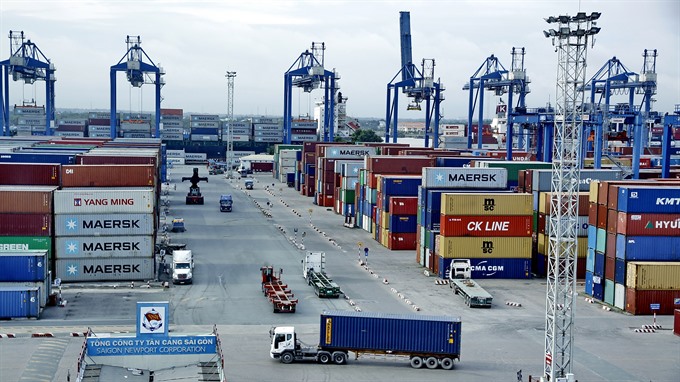 Economy
Economy

Identifying HCM City’s typical export products should not be based simply on their export volume or value or subjective decisions, but on careful analysis, experts have said.
 |
| Containers at Saigon Newport Corporation in HCM City. — VNA/VNS Photo Thế Anh |
HCM CITY — Identifying HCM City’s typical export products should not be based simply on their export volume or value or subjective decisions, but on careful analysis, experts have said.
The city Department of Industry and Trade held a seminar on August 29 to identify the city’s top export products and collect opinions from experts, business groups and enterprises for its Export Development Project in 2017-20 before submitting to the People’s Committee for approval.
The project’s objectives are to forecast opportunities for and challenges to exports, identify the most competitive export sectors and products, and propose solutions and strategies for developing exports.
Nguyễn Ngọc Hòa, the department’s deputy director, said the department is working with the Institute of Public Policy - University of Economics HCM City and experts from Fulbright University to develop the project.
The consulting team has used a variety of research methods to identify the city’s top export products as well as used data from nearly 14,000 export enterprises combined with surveys and interviews of some 200 enterprises in 14 sectors to determine the competitive advantages of and value addition in export products, he said.
Hòa said the city has paid close attention to shifting its export structure, reducing export of low added-value products and increasing export of highly processed products and services with high added value, with programmes designed to encourage the shift in recent years.
But the results have been below expectations, he admitted.
Analysing the city’s export structure in the 2008-15 period, Đinh Công Khải, director of the Institute of Public Policy, pointed out exports had mainly grown in volume terms and followed the market, and lacked a strategic direction for development.
The city’s production and exports are not very competitive, with the former being mainly contract-based and not deeply participating in the global value chain, he said.
As a result, the city’s export growth is fully dependent on global market fluctuations, making it hard to implement strategies or programmes to shift export structures, he said.
Besides, the city has not identified industries with high export growth potential and competitive advantages based on scientific analysis or new methods, and relies on the traditional approach based mainly on export value, he said.
Programmes to support the shift in the export structure and develop exports are not cohesive, making it difficult for stakeholders to implement them, he said.
To achieve the objectives of export restructuring, it is necessary to evaluate the competitiveness of existing exports, delegates said.
Designating the major exports now as the key exports is easy, but their value addition and comparative advantages would be low, they said.
On the contrary, sectors that currently do not export much but have high potential would need investment and strategies to develop, they said.
Trần Việt Anh, deputy chairman of the HCM City Union of Business Associations and chairman and general director of Nam Thái Sơn Company, said the city needs to assess the competitive advantage of products through international export fairs and exhibitions to identify key products.
Dr Trần Du Lịch, a member of the Government’s economic advisory group, said the city needs to change its mind about what are typical export products since even its four key industry groups and nine service sectors need to be changed because they may not be suitable in the current time. — VNS




